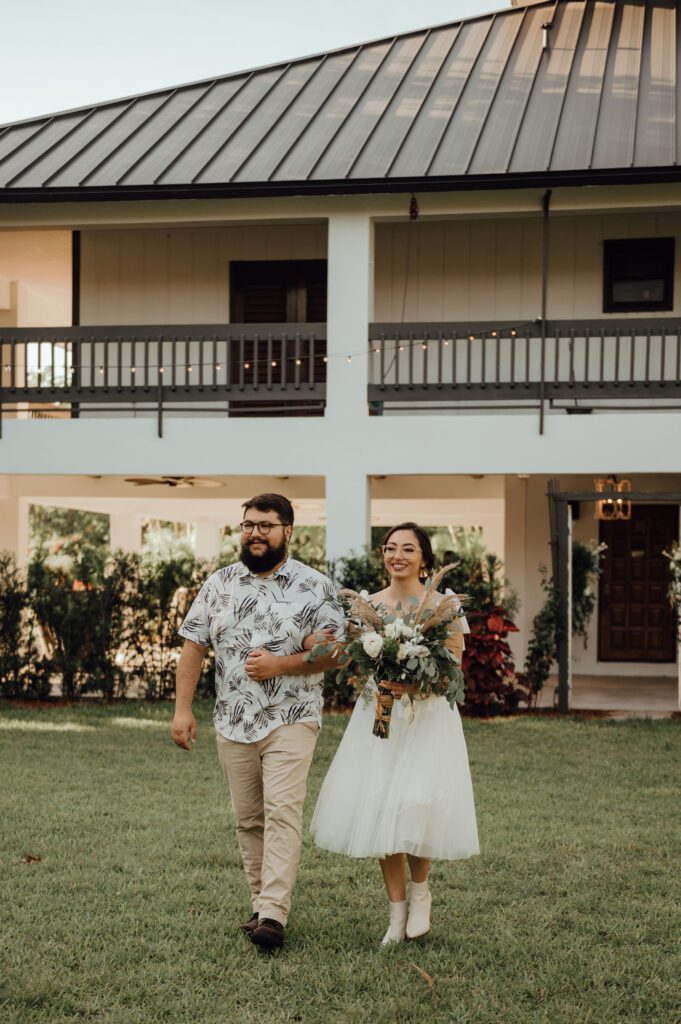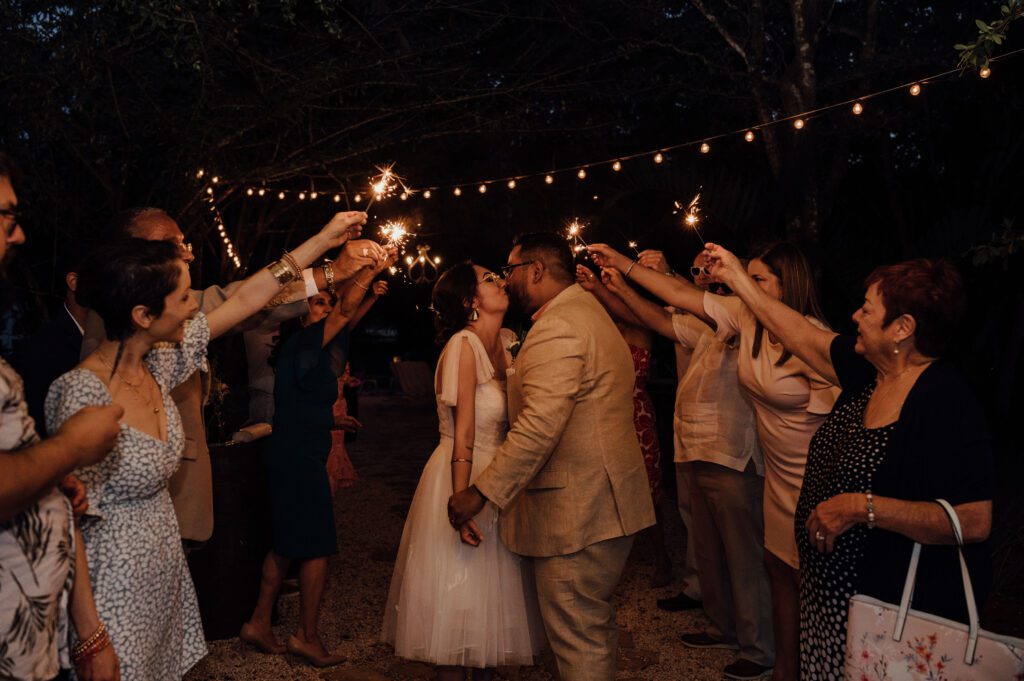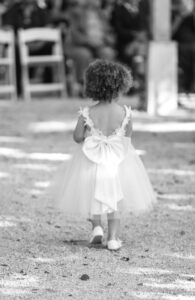The wedding processional refers to the group of people walking down the aisle in a specific order to mark the beginning of a wedding ceremony. The processional often includes a permutation of the officiant, the wedding party, flower girls, ring bearers, and the bride and groom and their parents.
Traditional wedding ceremonies are perfect for the classic couple who wants a more conventional celebration. There is typically a welcome or introduction by the minister, followed by the exchange of vows. The couple then exchanges rings, and after the couple shares a kiss, the minister announces them for the first time as a married couple.
1. The Processional

First off, the processional. This is when members of your immediate family and wedding party head down the aisle and either find a seat or take their places on either side of the altar. The processional begins with the bride’s mother and follows with the groom, best man, paired-up wedding party, flower girl, and ring bearer. It ends with the bride making her entrance escorted by her father who “gives her away” to the groom.
2. Words of Welcome
Once everyone is in place, the officiant will say a few words of welcome. The officiant may thank guests for bearing witness to your union as well as welcome everyone.
3. Introduction
Next, the officiant will offer an introduction and some thoughts on marriage. This could be a brief recounting of your love story, words on what marriage means to you, or a statement about the ceremony to come and what it represents.
4. Readings
From there, if you are including readings of any sort in your ceremony, readers will be invited up to share a few words. You could have your officiant introduce each reading and reader or have things flow more naturally between readers.
5. Officiant Addresses Couple
This is when the officiant addresses you and talks about the responsibilities of marriage and the sanctity of the vows you’re about to take.
6. Exchange Vows
After the readings have been shared, the two of you will take turns reciting your vows. This is often the emotional part of the ceremony, especially if you write your own vows.
7. Ring Exchange
After each person recites the vows, you will place the rings on each other’s fingers. It’s considered a symbol of your marriage. You may opt to perform the ring exchange quickly without vows, or you may say a few words about what the ring symbolizes before placing it on your partner’s finger.
8. The Kiss

Now, the good part! After you’ve exchanged vows and rings, the two of you seal your marriage with a kiss. You’re officially married!
9. Unity Ceremony
If you’re planning on having a unity ceremony, this is a good time to incorporate it. In a unity ritual, the couple does something that physically symbolizes their new union, such as using two candles to light a single candle or binding their hands together with a ribbon.
10. Closing Remarks
If your ceremony is a religious affair, this is the proper time for a final prayer. Typically, closing prayers are the same as final blessings after each religious ceremony and the officiant can call for the congregation to lift their hands to join in blessing them. If it’s not religious, the officiant can say words of encouragement to the couple, bless them in their union, or read a requested prayer or poem aloud. Typical prayers involve asking for prosperity, faithfulness, and a strong bond.
11. The Recessional
This is where the officiant pronounces you married and turns to the guests to introduce the married couple for the first time and encourages guests to applaud and celebrate the newlyweds. Then, the newlyweds lead the recessional down the aisle as guests cheer for your union. The order is the reverse of the processional.



